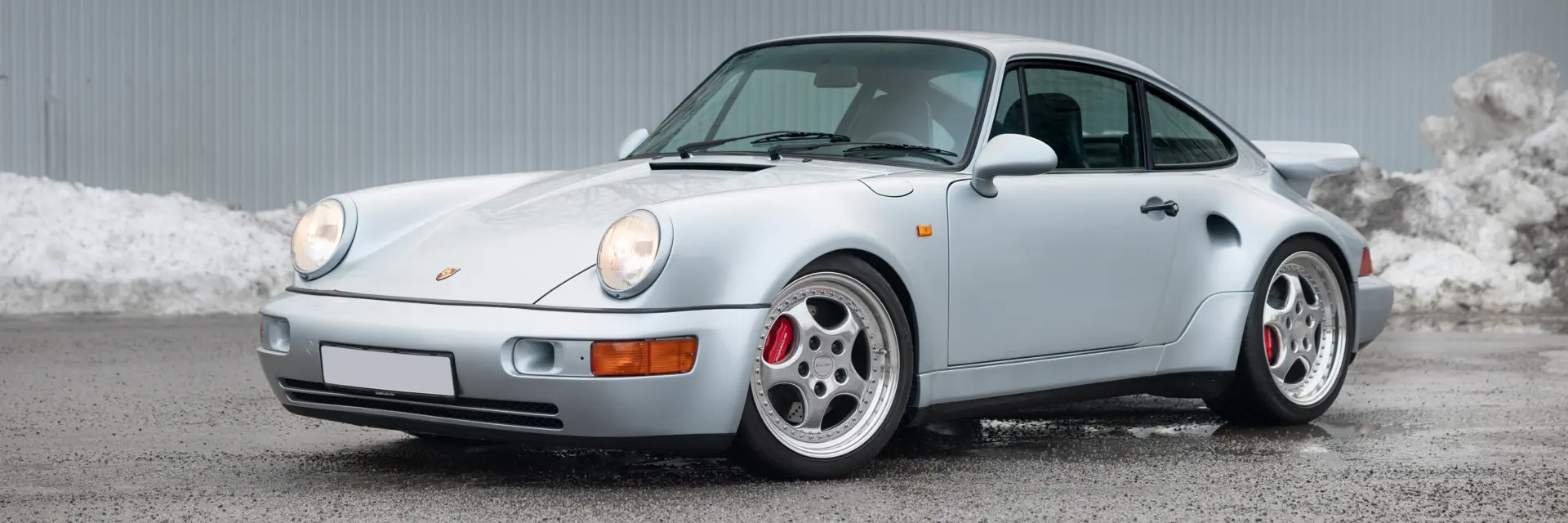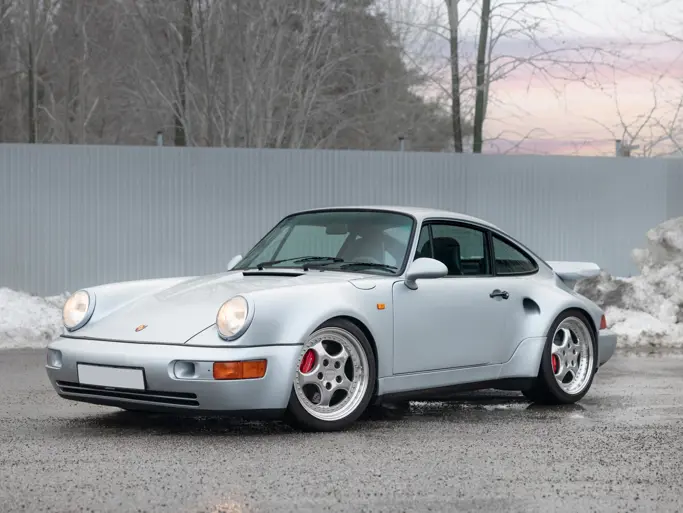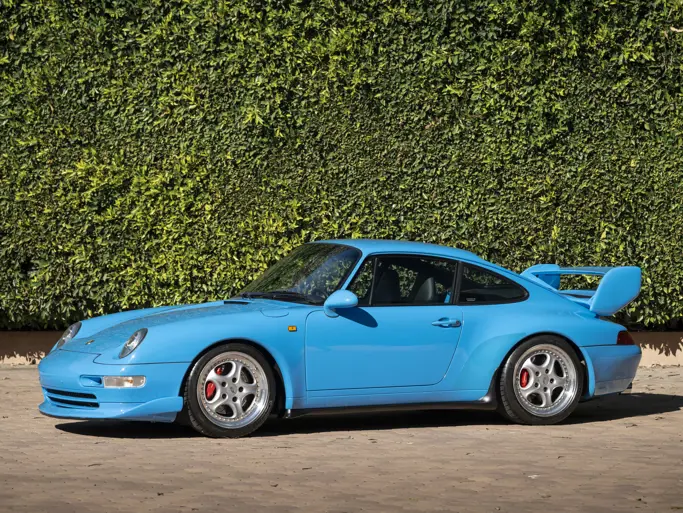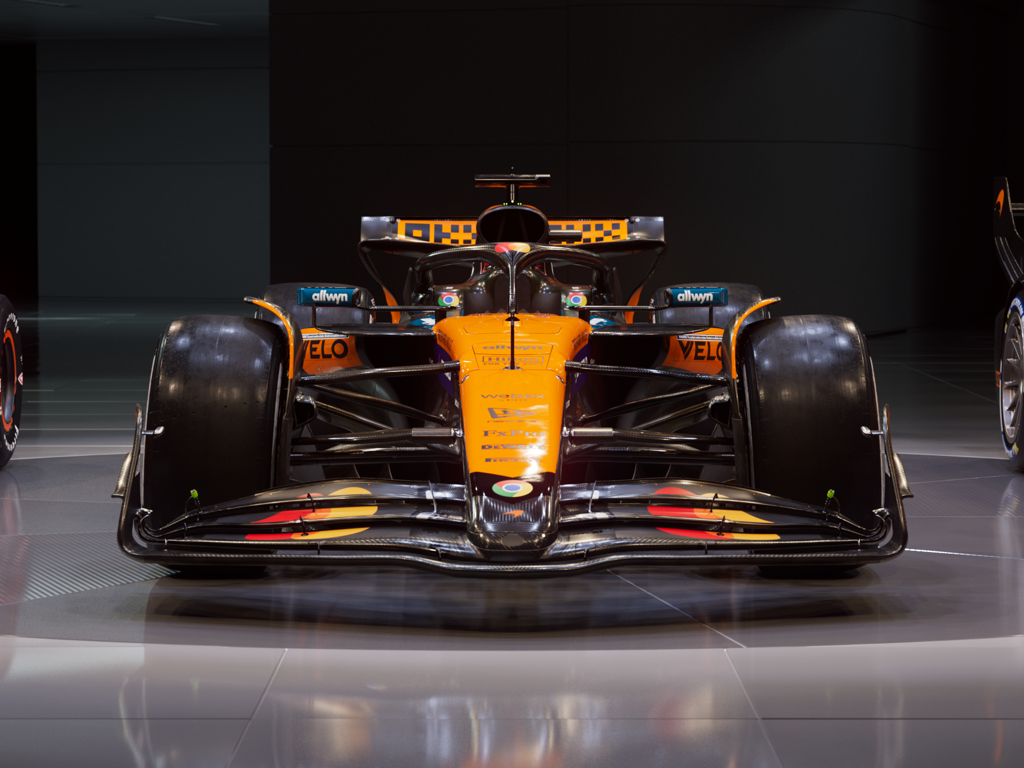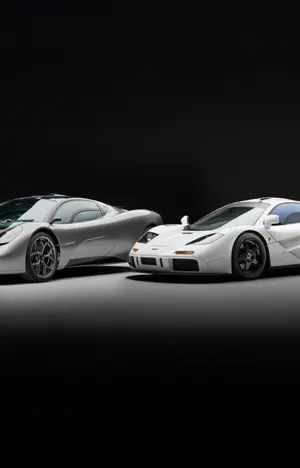Today, Porsche sits astride the enthusiast world in dominant fashion and for a younger demographic, the Porsche brand is aspirational yet attainable, with a clear ladder to its highest peaks, and any number of subcultures that will envelop you with open arms.
Wind back to the early 1990s, however, and Porsche as the automotive colossus as we see it now was just one month away from going bust. It was a perfect storm of increasing US import tariffs, a worldwide recession, and huge financial losses from the 959 program. What was supposed to be a brand-new dawn of technological excellence for the 1990s ended up in a hard-fought battle for survival, rehashing old mechanicals hastily to keep the lights on.
Porsche would, of course, prevail thanks to the 993-generation 911, the innovative Boxster, and eventually the water-cooled 911 (996), and go on to even bigger things with the Cayenne. However, in the early 1990s, Porsche was limited by what it could do thanks to tight finances. Its volume seller, the front-engined 944, was reformed into the 968, and plans for a 959-inspired four-wheel-drive replacement for the flagship 911 Turbo were canceled. Instead, the 930 Turbo’s mechanicals were warmed up and served in a 964-flavored dish.
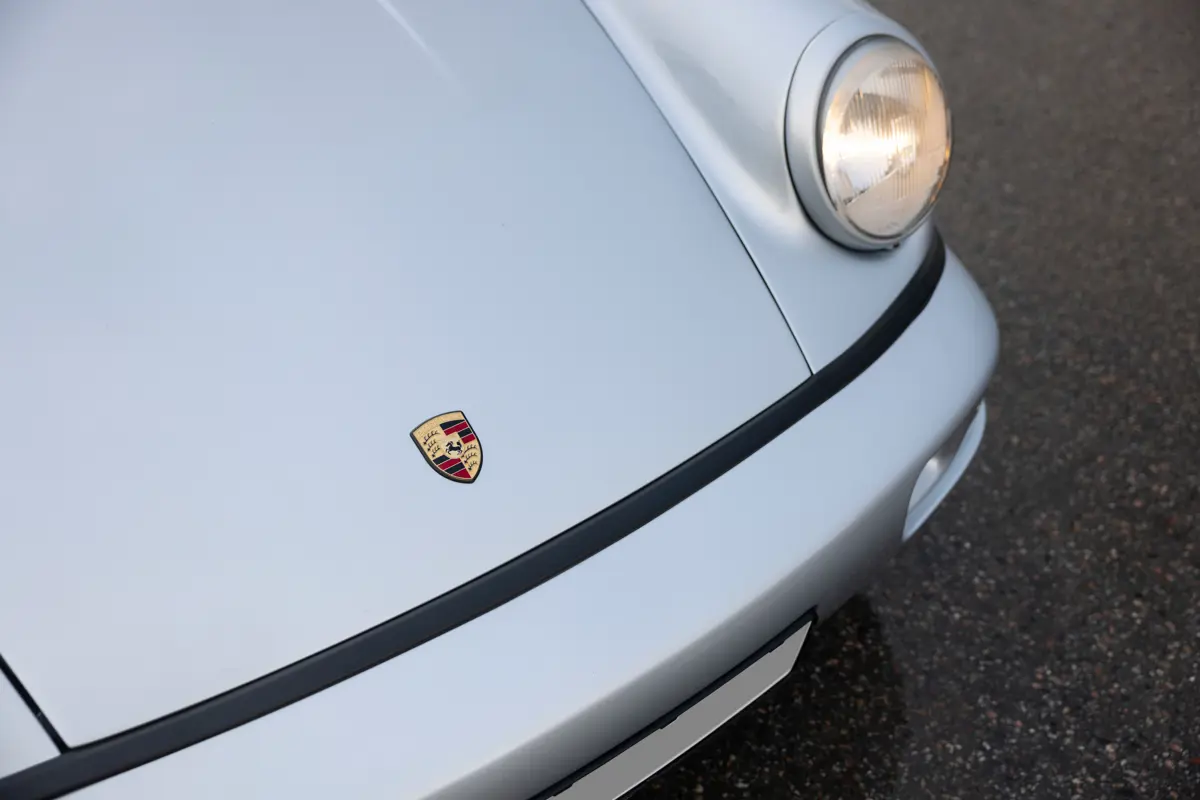
Porsche desperately needed to inject dynamism into the brand, but with limited resources it turned to that which it knew best—truly focused sports cars. After all, it had form—the Carrera RS 2.7 of the 1970s had been slated to sell less than 500 examples, but it ended up selling more than twice that.
In the absence of a credible worldwide prototype endurance racing series after the collapse of Group C, Porsche put its energies into the customer GT market, and one-make series such as the Carrera Cup. These lightweight, honed machines inspired a rich seam of exclusive, laser-focused 911s that are today among the most feted driving machines of the 1990s—and RM Sotheby’s has two leading lights from that era coming up for grabs at the Miami auction.
The first is a 1993 Porsche 911 Turbo S Lightweight, estimated at $800,000 - $1,000,000. The original 964 Turbo was a hastily produced car, which essentially transplanted the 3.3-liter 930 Turbo drivetrain into the 964 package, with an upgraded inlet and exhaust system, Bosch Motronic engine management, and a larger intercooler yielding a 20 brake-horsepower bonus over the 930.

However, with 928 sales dwindling, the 964 Turbo had begun its transformation into the luxury GT flagship of the company. As such, the 964 Turbo 3.3 had electric seats, multi-speaker sound systems, air conditioning, and much more besides tipping the scales at a somewhat porky 1470 kilograms.
At the time, turbocharged 964s were doing the business for privateer racing teams, and soon questions started being asked about roadgoing replicas. Porsche answered that need in 1992 with the 911 Turbo S Lightweight. Taking the Carrera RS 2.7 as its inspiration, engineers ditched the electric windows and seats, the rear seats, air conditioning, radio, central locking, the rear wiper, and the power steering. In came thinner side and rear window glass, while the doors, bonnet, and engine lid were crafted from carbon fiber-reinforced glass fiber. It all added up to a phenomenal 180-kilogram weight saving over a standard Turbo.
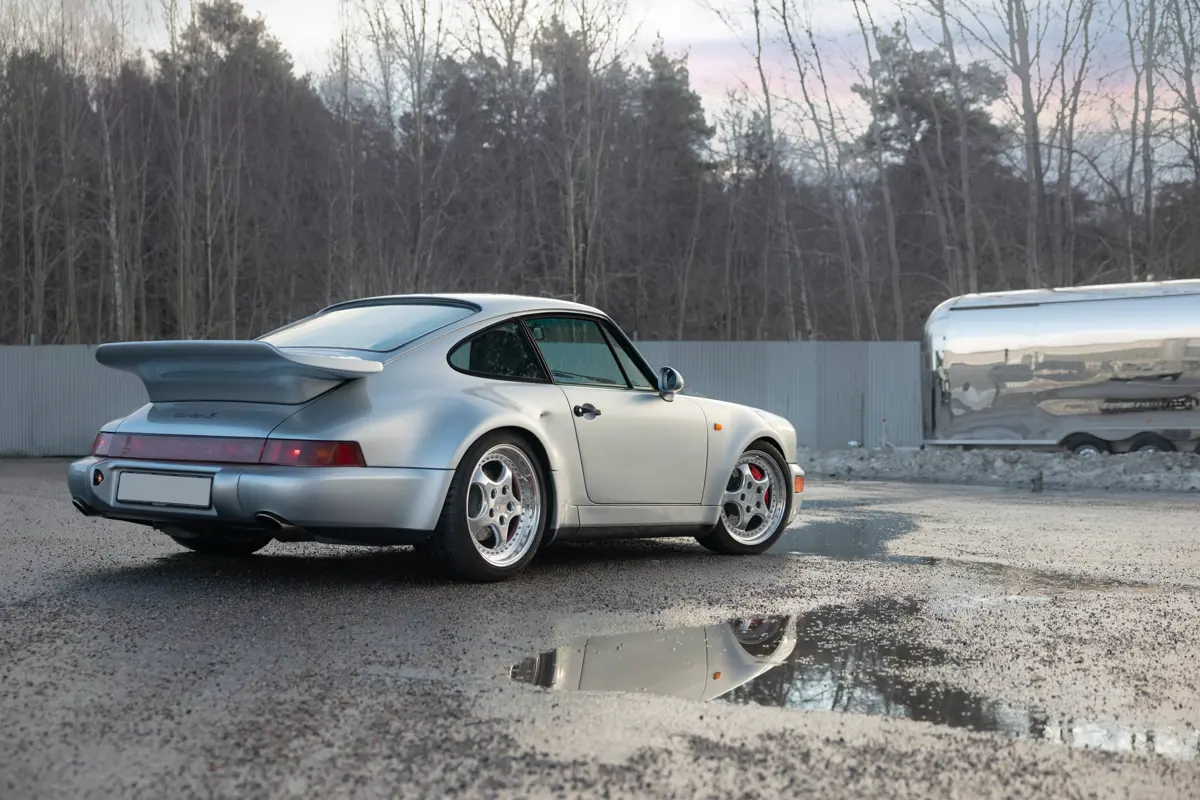
It certainly looked the part—and the 964 Turbo was hardly a shrinking violet to begin with. Huge intakes in the enormous rear arches channeled cool air to the brakes, while driving lights in the front bumper were junked in favor of additional ducting for the front brakes. The rear tea tray spoiler was crafted from glass fiber, and did without any rubber edging. The best was saved for the engine, however…
However, there are of course two trains of thought when it comes to the ultimate air-cooled 911 experience. Forced induction has its fans, but the appeal of a high-revving, naturally aspirated engine screaming to a vertiginous redline is hard to ignore. Which brings us to the 1996 Porsche 911 Carrera RS 3.8 offered for sale in Miami.

In this case, more was definitely more, with a larger turbocharger, bigger valves, extra boost via the engine management system, and tweaked ignition timing. The result was a scarcely believable 381 brake-horsepower—60 brake-horsepower more than the standard car and far beyond what Ferrari could muster from the 348. Indeed, it fell just 4 brake-horsepower shy of what an original Testarossa pushed out. As a result, it could spring to 60 mph in just 4.5 seconds, and top out at north of 180 mph.
It was not just a straight-line wonder, however. Inspired by the Carrera RS program, the suspension was beefed up with upgraded springs and dampers, with gorgeous three-piece 18-inch Speedline alloys covering upgraded brakes with red calipers. The result is one of the most uncompromising yet utterly engaging experiences this side of a 993 GT2. The later 964 Turbo 3.6 offers up a similar amount of power, but as great as that is, it’s nowhere near as hardcore as the 964 Turbo 3.3 Lightweight.
As such, it is perhaps the last of its kind—the final truly scary, totally uncompromising 911 Turbo. The later 993 GT2 may have more power, but its multi-link rear suspension makes it rather more amenable. The 964 Turbo Lightweight 3.3 is perhaps the ultimate test of the turbocharged Porschephile. Just 80 were ever built—and the Miami sale represents a rare opportunity to add one to the most discerning of air-cooled 911 collections.

The 993 generation represented a return to a curvier 911 shape, but under the skin lay bigger changes. Using knowledge gained during his development of the Z-axle for BMW, Ulrich Bez, later CEO of Aston Martin, introduced multi-link rear suspension with parallel wishbones attached to an aluminum subframe. The previous semi-trailing arm setup had led to not only criticisms of the 964’s handling, but also road noise. The 993’s multi-link setup introduced some passive rear-wheel steering which helped to counteract the well-known 911 Achilles heel—lift-off oversteer. Handling was transformed, and thanks to the subframe being attached to the body with rubber mounts, the 993 was also far more refined.
Of course, refinement is fine for much of the range, but for those in search of hardcore thrills, the Carrera RS of 1995 was where it was at. The recipe followed a familiar protocol of hardcore lightweighting, with the electric windows, seats, and mirrors scrapped, along with the headlamp washers, central locking, airbags, sound insulation, and stereo system. Even the intermittent wiper control was sacrificed at the altar of weight saving, which amounted to 100 kilograms over a standard Carrera 2.

Like the 964 Carrera RS, the bodyshell was seam-welded to add strength and rigidity, while larger tires were housed within wider wheel arch edges. Add in lightweight Recaro chairs, an aluminum bonnet, and thinner side and rear glass—not to mention a 30-millimeter front/40-millimeter rear ride height drop with stiffer springs and dampers—and it was every inch the hardcore road racer. It also gained adjustable anti-roll bars and a front strut brace, contributing to what several Porsche experts regularly describe as the best-handling air-cooled 911 ever built.
Porsche also upgraded the engine, taking the capacity to 3,746 cc courtesy of a two-millimeter increase in cylinder bore. With the addition of larger valves, a Varioram intake system that would later go on to serve in all Carreras, plus a remapped ECU, the Carrera RS developed 296 brake-horsepower—a figure that only a few years previously would have required forced induction. Marshalling all this performance to the road was a six-speed manual gearbox with revised ratios.
What became known as the Touring model certainly looked mean, thanks to a fixed whale tail rear spoiler, 18-inch three-piece Speedline alloy wheels, and a sharp front splitter. But those who wanted the ultimate naturally aspirated air-cooled 911 experience could option code M003—the ClubSport package, designed to homologate the RSR racing version.

As shown in the Riviera Blue car up for grabs in Miami, the M003 option took the lightweighting to even further extremes, stripping out even more interior comforts and imbuing the interior with a welded roll cage, lightweight composite bucket seats, and racing harnesses. The gear ratios were revised too, with shorter ratios in fourth, fifth, and sixth, and a shorter gear lever.
However, theres no getting away from the star of the show—the wild rear wing that looks like it may be fitted with twin grenade launchers. These air intakes helped funnel air to the engine to provide the ultimate edge in BPR GT racing.
With just 1,104 built, all 993 Carrera RSs are rare, but genuine M003 Clubsports are almost unicorns—just 227 were built.
Whether you like your hardcore 911s with forced induction or as naturally aspirated screamers, these two very different takes on hardcore 911s acted as much-needed halo cars for a Porsche in peril. They leave a legacy that is still seen in Porsches of today, courtesy of the GT3 RS models that continue to demonstrate focused lightweighting.
More importantly, it showed just what Porsche engineers could come up with when backed into a corner. As the saying goes, adversity is the mother of invention.

